Are you a fishing aficionado, ready to take your angling skills to the next level with some advanced rig setups? Trust me, I’ve walked in those same footprints on the riverbank, questioning how seasoned pros manage their complex rigs.
That curiosity spurred me into an intense research dive, surfing through expert tips and sly tricks to master a variety of setups. Get set for an adventurous cast off into these 9 crucial techniques for advanced fishing rig mastery – it’s bound to have you well and truly hooked!
Key Takeaways
- Use tungsten bullet weights for better sensitivity and a natural presentation in the Texas Rig.
- Avoid shiny bullet weights that could scare fish away.
- Light wire hooks work well with the Texas Rig and can improve your hookset.
- Select the right lures, dye lure tips, and use a scent stick to attract more fish.
- Choose an appropriate rod and reel combo for optimal performance.
- Utilize braid mainline and fluorocarbon leader for deep fishing success.
- Incorporate finesse techniques into your rig setup to increase chances of success.
- Wear heavy – duty gloves for safety while handling fish or gear components.
- Learn how to build DIY fishing rig accessories like a motor mount from a kitchen cutting board or attaching a jet engine to your kayak.
Understanding the Texas Rig
In the Texas rig, it’s important to use tungsten bullet weights for better sensitivity and a more natural presentation. Avoid using shiny bullet weights that could spook fish. Use light wire hooks to ensure a better hookset with soft plastic lures.
Select the right lures and tackle for your specific fishing situation, and consider dyeing the tips of your lures for added attraction. Using a scent stick can also increase your chances of success, as well as choosing an appropriate rod and reel combo.
Utilize braid mainline and fluorocarbon leader for optimal performance, and don’t be afraid to incorporate finesse techniques into your Texas rig setup. Lastly, don’t forget to wear heavy-duty gloves to protect your hands while handling fish or gear components during setup or retrieval.
Importance of tungsten bullet weights
Tungsten bullet weights play a big part in Texas rig fishing. They are picked over lead weights most times. This is because they give better contact feels. Tungsten weights are sensitive and make the job easier for you.
Also, remember that tungsten is denser than lead! This helps to get better results with your Texas rig setup. With tungsten bullet weights, your lure acts more like it would in real life under water.
So if you want to be good at advanced fishing rig setups, think carefully about using tungsten bullet weights!
Avoiding shiny bullet weights
Shiny bullet weights can be a no-go. Fish can get scared by their glimmer in the water. You need your bait to blend into the wild, not stand out. Dull or matte finish weights are best for this job.
They sink fast to the bottom and don’t scare away fish.
Keep pegging your weight down with the Texas Rig method if you’re in heavy cover spots. Tungsten or lead works great as they have a smaller profile than shiny ones. This helps adjust depth easier when bottom fishing too! Just remember, perfect bait presentation is key when lure rigging and avoiding those flashy weights will help!
Using light wire hooks
Light wire hooks are great for the Texas Rig fishing technique. They are key to a winning setup. This style of hook works well in all sorts of fishing conditions. You can use them with different types of weights and sizes, too.
So, test out light wire hooks on your next trip. You will see how they help you catch more fish!
Selecting the right lures and tackle
When selecting lures and tackle for fishing, it’s important to consider the type of rig you’ll be using. For example, if you’re using the Texas Rig, tungsten bullet weights are recommended because they provide a better feel for detecting bites.
It’s also best to avoid shiny bullet weights as they can scare off fish. When it comes to hooks, light wire hooks work well with the Texas Rig because they allow for better bait action.
As for lures, soft plastic stick baits and worms are popular choices for Texas rigging weightless. Offset worm hooks are commonly used with weightless baits as well. Overall, choosing the right combination of lures and tackle will greatly increase your chances of success on the water.
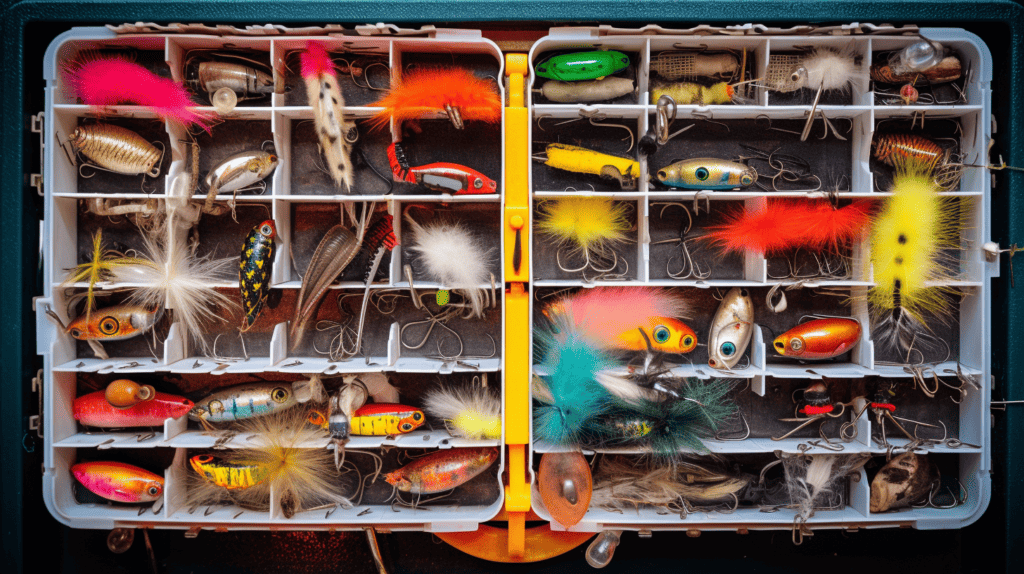
Dyeing lure tips
When it comes to the Texas Rig, there are some tips for dyeing your lures that can help you catch more bass. Dyeing your soft plastic lures can give them a more natural and realistic appearance, which can attract fish.
You can use dye pens or dip your lures in a dye solution to achieve the desired color. Experiment with different colors and patterns to see what works best for you. Just remember to let the dye dry completely before using your lure.
By dyeing your lures, you can enhance their effectiveness and increase your chances of success on the water. So don’t be afraid to get creative and try out different dyeing techniques for better results!
Using a scent stick
Using a scent stick can make your fishing with a Texas rig even more effective. Scented lures can give you more confidence while fishing. The fragrant bait attracts fish by releasing an enticing aroma into the water.
It acts as an odor enhancer, making your lure more appealing to fish. A scented attractant or aromatherapy for fishing can greatly improve your chances of catching fish. By incorporating a perfumed fishing lure or using a scented bait stick, you are enhancing the effectiveness of your Texas rig setup.
So don’t forget to try out an aromatic scent stick for angling and experience the difference it makes in attracting fish to your line.
Choosing the appropriate rod and reel
For the Texas rig technique, it’s important to choose a medium/heavy rod that has good casting distance. This type of rod is versatile and works well for general Texas rigging. When selecting a reel, consider factors like line capacity and gear ratio.
Pairing the right rod and reel is key for achieving optimal performance and success with the Texas rig technique.
Utilizing braid main line and fluorocarbon leader
Using a braid main line and fluorocarbon leader can really improve your fishing success, especially when it comes to deep fishing. It’s a smart choice because the braid main line is strong and allows you to feel even the subtlest of bites.
The fluorocarbon leader is nearly invisible in the water, which can help increase your chances of getting more strikes. When choosing your lines, opt for an affordable braided line for the main line, while using just a fluorocarbon line for the leader.
Aim for a 10 lb to 20 lb braid on your spool and a 20 lb to 40 lb monofilament leader if you’re using spinning tackle. This combination will give you great control over your rig setup and help you land more fish.
Incorporating a finesse approach
To master the finesse approach in fishing, it’s important to understand the Texas Rig technique. By using lighter wire hooks and avoiding shiny bullet weights, you can enhance your finesse techniques.
Choosing the right lures, dyeing lure tips, and using a scent stick can also make a difference. Selecting appropriate rod and reel setups, like braid main line and fluorocarbon leader combinations, can further improve your finesse skills.
Additionally, consider incorporating a finesse approach by using heavy-duty gloves for added control. The finesse approach with the Texas Rig allows for subtle techniques that can greatly increase your chances of success on the water.
Using heavy-duty gloves
When it comes to fishing, using heavy-duty gloves is essential for your safety and comfort. These gloves are specially designed to protect your hands from sharp hooks, spines, and other potential injuries while handling fish or bait.
They come in different materials like polyethylene, rubber, leather, and chemical-resistant options. Whether you’re dealing with wet conditions or need extra grip strength, there’s a type of glove out there that suits your needs.
Heavy-duty gloves also provide insulation against the elements. If you’re fishing in cold weather or handling icy fish, thermal gloves can keep your hands warm and prevent frostbite.
On the other hand, if you’re fishing in hot climates or working with abrasive surfaces like rocks or coral reefs, heat-resistant gloves will ensure that you stay comfortable and protected.
Investing in a pair of high-quality heavy-duty gloves is a smart move for any angler. Not only do they offer protection but they also enhance your grip strength and overall performance while on the water.
Building DIY fishing rig accessories
Learn how to create innovative fishing rig accessories like a motor mount from a kitchen cutting board and attach a jet engine to your kayak. Discover the Bixpy K-1 motor and outboard kit, test out a DIY wireless foot control, and rig your YakAttack crate like a pro.
These DIY tips will take your fishing setup to the next level!
Creating a motor mount from a kitchen cutting board
I wanted to share a cool DIY project that I recently tried out – creating a motor mount from a kitchen cutting board. It’s a clever way to build your own fishing rig accessories without spending too much money.
For this project, I used a cutting board made of starboard material. After measuring and cutting it to the desired size, I then focused on attaching the motor wires. To do this, I cut the wires to about 8 inches in length and soldered male headers onto them.
This allowed me to easily connect the motor to the mount. If you’re interested in trying this project yourself, there are step-by-step instructions available online for building engine mounts from scratch.
Attaching a jet engine to a kayak
I recently discovered a fascinating way to enhance your fishing experience: attaching a jet engine to your kayak. With this modification, you can effortlessly navigate through the water, reaching spots that were previously inaccessible.
By installing a kayak propulsion system, you can cover more ground and spend less time paddling. This DIY fishing rig accessory allows you to customize your kayak for fishing and adds an element of excitement to your outings.
It’s important to do thorough research and follow proper installation instructions to ensure safety and optimal performance. So, why not take your kayak fishing adventures up a notch by exploring the possibilities of attaching a jet engine?.
Exploring the Bixpy K-1 motor and outboard kit
I recently had the chance to explore the Bixpy K-1 motor and outboard kit, and I must say, it’s quite impressive. This motor is specifically designed for personal water propulsion and small watercrafts, making it perfect for kayak fishermen like myself.
The K-1 Outboard Kit includes the Bixpy K-1 Motor, which provides 33lb of thrust, and the waterproof, wireless PP-378 Outboard Battery. It’s amazing how such a small motor can generate enough power to propel a kayak for miles! In fact, the Bixpy jet motor is not only compact but also lightweight and versatile – truly a game-changer in marine propulsion systems.
No wonder it’s favored by many kayak anglers!
Testing a DIY wireless foot control
I recently decided to test out a DIY wireless foot control for my fishing rig, and I have to say, it was a game changer. With this homemade accessory, I was able to have full control of my fishing gear without having to use my hands.
It made casting and reeling in so much easier and more efficient. Plus, the wireless feature allowed me to move around freely without getting tangled up in cords or wires. It’s definitely something every fishing enthusiast should try if they’re into customizing their own gear.
Give it a go and see how it improves your fishing experience!
Rigging a YakAttack crate like a pro
I love using my YakAttack fishing crate because it’s designed with a hinged-lid and rigid body, making it durable and convenient. With the YakAttack Blackpak, I can easily rig my kayak like a pro.
The Blackpak can hold multiple rods and 3600 plano boxes, allowing me to bring all the gear I need for a successful fishing trip. And if that’s not enough, the Blackpak also has additional accessories like paddle holders that I can use to enhance my kayak setup even further.
It’s an essential accessory for any fishing enthusiast looking to take their rigging game to the next level.
Mastering saltwater sight fishing
Learn the techniques and tips for success in saltwater sight fishing, and take your angling skills to the next level.
Techniques and tips for success
As an avid fishing enthusiast, I want to share some techniques and tips for success in saltwater fishing. These pointers can help you improve your skills and increase your chances of catching fish. Here are some valuable insights:
- Choose the right bait: Different fish species have different preferences when it comes to bait. It’s important to research and use the appropriate bait for the type of fish you’re targeting.
- Use high-quality hooks: Invest in strong and sharp hooks that can withstand the challenges of saltwater fishing. This will ensure that you don’t lose any potential catches due to weak hooks.
- Pay attention to tides: Tides play a significant role in saltwater fishing. Understanding how tides affect fish behavior can help you determine the best times to go out on the water.
- Be patient and observant: Fishing requires patience, especially in saltwater environments where fish may be scattered or elusive. Take your time, observe your surroundings, and adapt your strategy based on what you see.
- Practice proper casting technique: Casting accurately is crucial in saltwater fishing because it allows you to reach your target areas effectively. Spend time practicing your casting technique to improve your accuracy and distance.
- Keep an eye on weather conditions: Weather conditions can greatly impact fish activity and feeding patterns in saltwater environments. Stay informed about current weather forecasts and plan your fishing trips accordingly.
- Respect conservation regulations: To ensure sustainable fishing practices and protect marine ecosystems, familiarize yourself with local conservation regulations and adhere to them at all times.
- Maintain your gear regularly: Saltwater can be corrosive, so it’s essential to clean and maintain your gear after every outing. Regular maintenance will prolong the lifespan of your equipment and prevent any unexpected failures while fishing.
- Learn from experienced anglers: Don’t hesitate to seek guidance from experienced anglers or join local fishing communities where you can learn valuable tips and tricks from others who have mastered saltwater fishing.
Equipment and tackle for advanced fishing rig setups
Choosing the right equipment and tackle is crucial for advanced fishing rig setups.
Importance of choosing the right gear and tackle
Choosing the right gear and tackle is essential for successful advanced fishing rig setups. The material of the guide is important because cheaper guides tend to be heavier and may not hold up well.
So, it’s crucial to select high-quality guides for better performance. When choosing a fishing rod, factors like length, materials, and action should be considered to ensure optimal results.
Additionally, selecting the right lures and hooks can make it easier to catch fish and determine the species you’ll reel in. Remember that expert tips on selecting and organizing fishing gear can greatly improve your overall fishing experience.
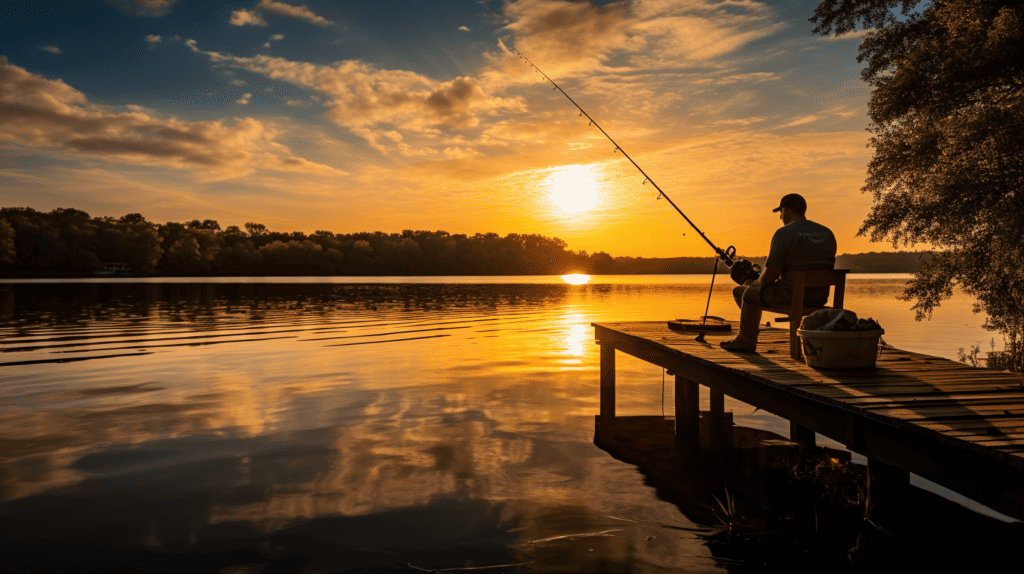
Benefits of finesse fishing
Finesse fishing offers several benefits, including increased sensitivity for detecting subtle bites, a more natural presentation that entices wary fish, and the ability to target specific areas with precision.
Tips for getting started with finesse tackle
If you’re new to finesse fishing, here are some tips to help you get started:
- Use small tackle: Opt for lighter rods, reels, and lines to match the finesse approach.
- Slow down your fishing: Finesse techniques require a slower retrieve and more patience. Take your time and let the bait work its magic.
- Take a gentle approach: Avoid making loud noises or sudden movements that might scare away fish. Be stealthy and cautious.
- Fish in subpar conditions: Finesse tactics are particularly effective when the fishing conditions are tough. They can help you catch fish when other techniques fail.
- Experiment with downsized lures: Try using smaller baits and lures that mimic natural prey. This can entice finicky fish to bite.
- Learn easy tactics: Start with simple finesse techniques like drop shotting or ned rigging before moving on to more advanced methods.
- Appreciate the deadly effectiveness: Finesse fishing may seem subtle, but it has proven to be highly effective, especially in challenging situations.
- Expand your repertoire: As you gain experience, try different finesse techniques like wacky rigging or shakey heads to diversify your skills.
- Focus on summer and early season fishing: Warm days and changing water conditions make finesse techniques even more effective during these times.
Fly fishing setup for advanced anglers
For advanced anglers looking to take their skills to the next level, mastering the art of fly fishing is a must. From selecting the right rod and reel combo to understanding different casting techniques, this section will provide essential tips for achieving success on the water.
So grab your waders and get ready to dive deeper into the world of fly fishing!
Essentials of a fly fishing setup
Setting up a fly fishing setup requires several essentials to ensure success. Here are some key components you’ll need:
- Versatile Fishing Rod: A fly fishing rod is designed to cast lightweight flies accurately. Look for a rod that suits your target species and fishing conditions.
- Balanced Reel: Pair your fly rod with a reel that balances well. This will reduce strain on your wrist and make casting easier.
- Fly Line: Choose the right weight and type of fly line for your rod and target species. Different lines are designed for different casting techniques and fishing conditions.
- Leader and Tippet: Attach a leader to the end of your fly line, which helps transfer energy from the line to the fly during casting. Use tippet material to extend the length of your leader and attach your flies.
- Flies: Select flies based on the insects or baitfish present in the water you’re fishing. Carry a variety of patterns in different sizes to match changing conditions.
- Fly Box: Keep your flies organized in a waterproof fly box. This will protect them from damage and make it easy to find the right pattern when you need it.
- Fly Fishing Tools: Carry essential tools like nippers, forceps, and hemostats for cutting line, removing hooks, and handling fish safely.
- Waders and Boots (if necessary): Depending on where you’re fishing, waders and boots may be needed to keep you dry while wading in rivers or lakes.
- Knowledge and Skill Improvement: Take advantage of fly fishing classes or instructional videos to learn proper casting techniques, knots, and how to read water effectively.
Safety and success in ice fishing
To ensure safety and success in ice fishing, it’s crucial to check the thickness of the ice before venturing out. Always carry essential safety gear such as ice picks, a flotation device, and a rope to assist in case of emergencies.
Additionally, dress warmly in layers and let someone know your plans before heading onto the ice.
Tips for a safe and successful outing
Ice fishing can be a fun and rewarding experience, but it’s important to prioritize safety. Here are some tips for a safe and successful outing:
- Check the ice conditions before stepping on it. Look for clear ice that is at least 4 inches thick for walking, 5-7 inches for snowmobiles or ATVs, and 8-12 inches for cars or trucks.
- Pack essential items such as hand warmers, extra clothing layers, a first aid kit, and ice picks in case of an emergency.
- Choose popular and well – known fishing locations where the ice is regularly monitored and deemed safe by local authorities.
- Stay updated on weather conditions and avoid going out on the ice during strong winds or rapidly changing temperatures.
- Drill test holes to check the thickness of the ice throughout your fishing spot before setting up your gear.
- Use proper ice fishing gear, including an auger to drill holes, an ice scoop to remove slush and ice chunks from the hole, and insulated boots or cleats for secure footing on slippery surfaces.
- Always let someone know your plans before heading out onto the ice, including your expected return time and location.
- Follow all local regulations regarding bait usage, fishing limits, and any special rules specific to your chosen fishing spot.
Essential knots every angler should know
Mastering essential knots is crucial for any angler’s success on the water. Whether you’re tying your line to a lure or securing a leader, knowing these knots will make your fishing rig setups more efficient and effective.
Knot tying skills for beginning anglers
Tying good fishing knots is important for beginners like us. There are two simple knots that we should know: the Uni Knot and the Surgeon’s Loop. The most widely used knot in fishing is called the Clinch Knot or Fisherman’s Knot, so we should learn that one too. We need to know how to tie knots properly because they help us attach lines, lures, and other gear. As we become more advanced, we can learn additional knots like the Arbor Knot, Double Surgeon’s Loop, or Snelled Knot.
Conclusion on Tips For Advanced Fishing Rig Setups
In conclusion, mastering advanced fishing rig setups is crucial for experienced fishermen. By following the essential tips provided in this article, such as understanding the Texas Rig, building DIY fishing rig accessories, and utilizing finesse techniques, anglers can enhance their skills and increase their chances of success on the water.
With the right gear and tackle, knowledge of different fishing techniques, and proficiency in tying essential knots, anglers will be well-equipped to take on any fishing challenge.
Happy fishing!
FAQs on Tips For Advanced Fishing Rig Setups
1. What are some essential tips for mastering advanced fishing rig setups?
Some essential tips for mastering advanced fishing rig setups include using the right bait, adjusting your rig based on water conditions, and experimenting with different rigs to find what works best.
2. How can I choose the right bait for my fishing rig?
To choose the right bait for your fishing rig, consider the type of fish you’re targeting and their feeding habits. Researching local fishing reports or asking experienced anglers can also provide valuable insights.
3. How do I adjust my fishing rig based on water conditions?
To adjust your fishing rig based on water conditions, pay attention to factors such as water depth, current strength, and clarity. You may need to alter weights, hooks, or leader lengths to optimize your setup.
4. What should I do if my current fishing rig setup isn’t working?
If your current fishing rig setup isn’t producing results, try experimenting with different rigs or techniques. Changing the location you’re casting from or adjusting your retrieval speed can also make a difference.
5. Are there any specific tools or equipment required for advanced fishing rig setups?
While there aren’t any specific tools required for advanced fishing rig setups, having a selection of quality hooks, swivels, weights, and line is important. A tackle box with organized compartments can also help keep everything in order while out on the water

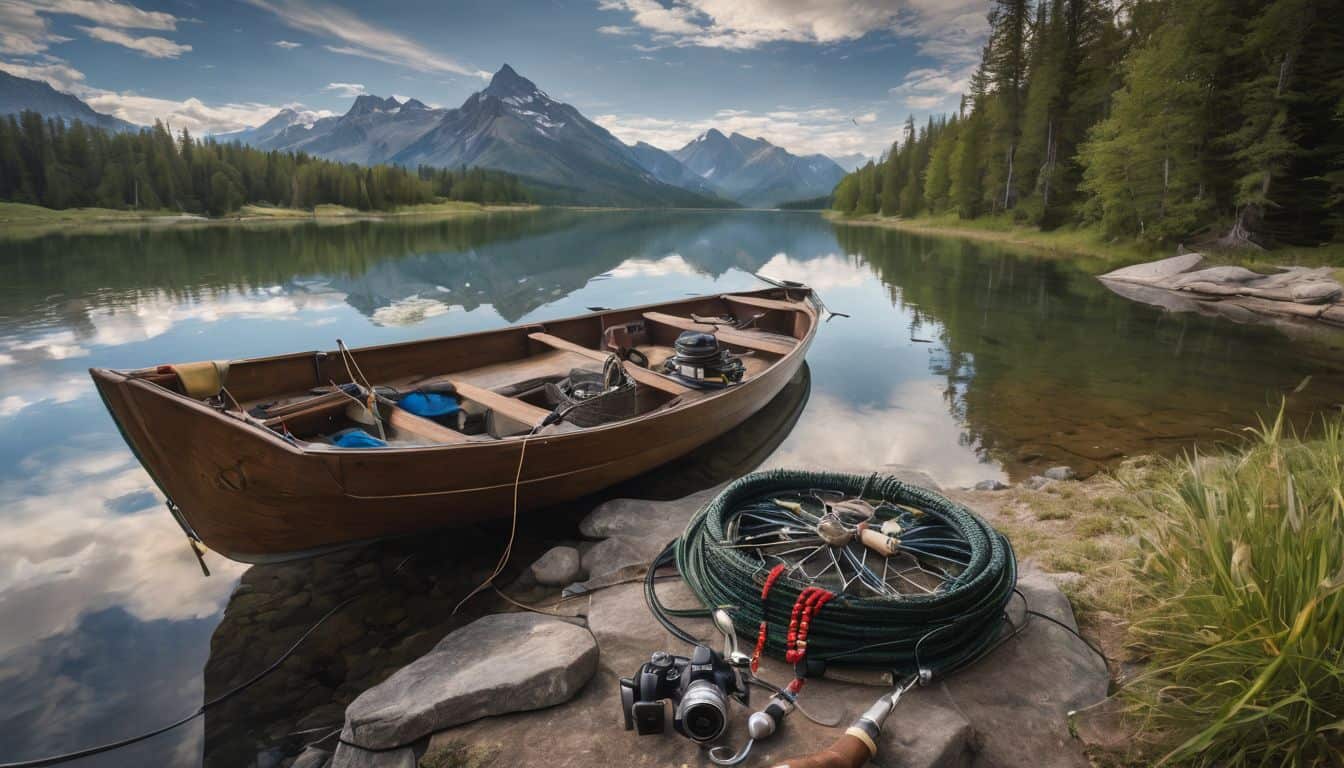

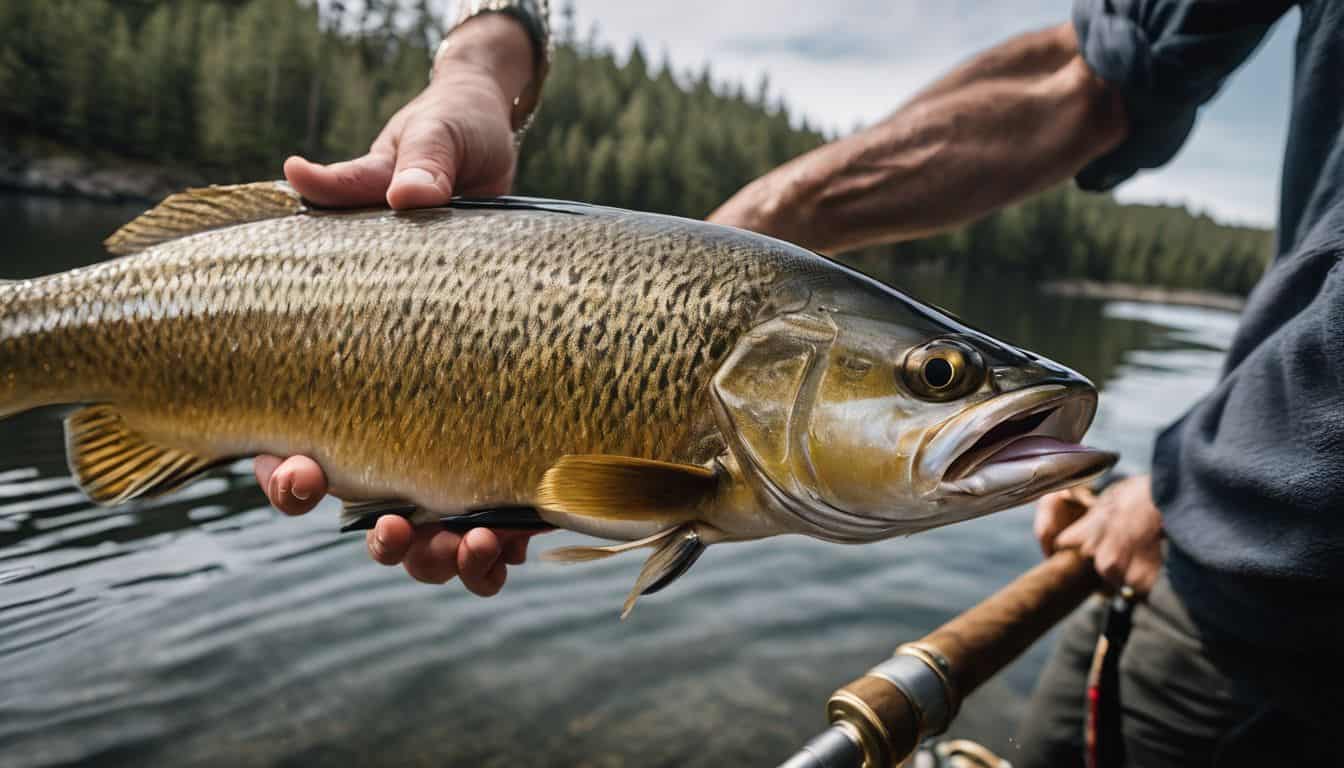
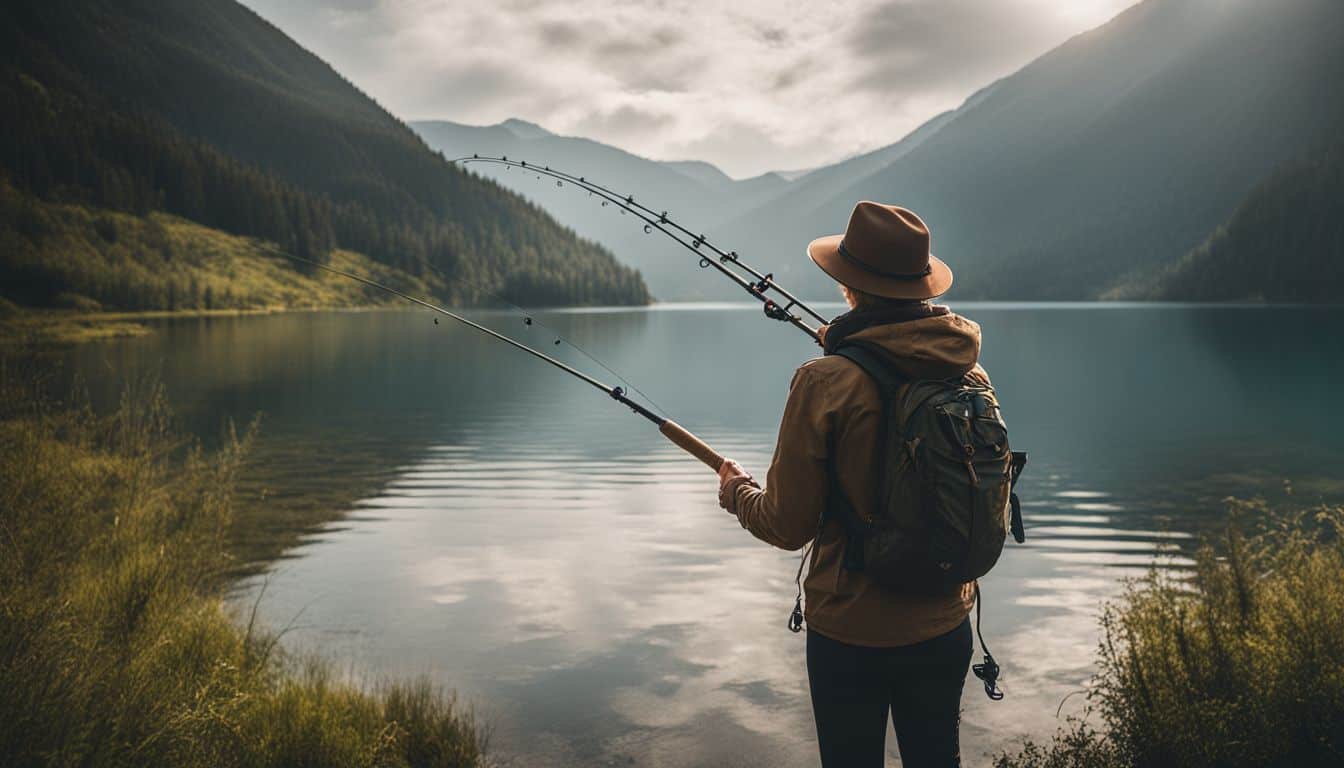
Leave a Reply